In Norse mythology, there are dozens of major gods and many other lesser deities that are mentioned in ancient Scandinavian literature.
Oral traditions and Old Norse texts from Iceland have passed down these legends. Though some are more than a millennium old, they still fascinate people today.
There are two main tribes of Norse gods — the Aesir and the Vanir — each of which has deities that play a part in countless myths.
Examples of Aesir gods include Odin and his son, Thor, as well as Loki and Heimdall. Examples of Vanir gods include Freyja and Freyr.
The relationships and interactions between these Norse gods can be challenging to understand at first, especially because of the nature of Norse mythology and because of some gaps in the historical record.
Unlike the Greek and Roman pantheons of gods, the recorded knowledge of Norse deities, including the origins of their legends, isn’t straightforward. Keep reading to learn more.
Also, see Is Valhalla Heaven or Hell? 10 Facts That Might Surprise You to learn more.
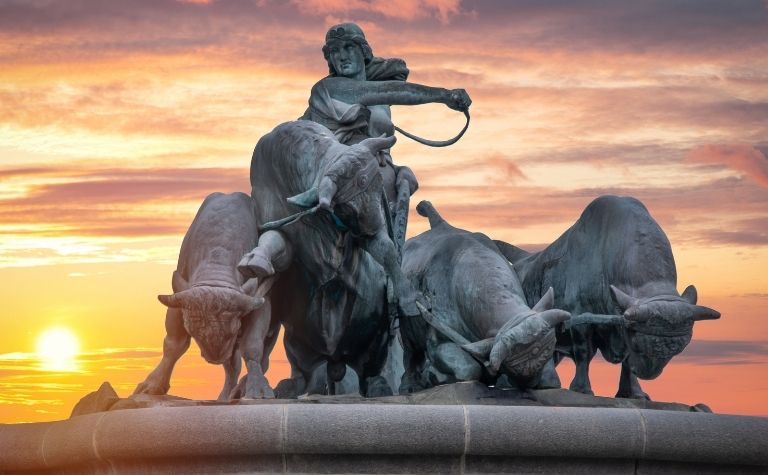
The Origins of Norse Mythology
Norse mythology, and the figures that populate its stories, originate from a variety of sources that, at times, seem to contradict one another.
For much of the history of the pre-Christian cultures in ancient Germania and medieval Scandinavia that contributed to these myths, the stories were passed down through oral traditions. Sometimes this created variations in certain tales.
Specific stories that are referenced today generally come from fables recorded in Icelandic texts written in the 13th century. [1]
Among the most important texts were the Prose Edda, which was thought to have been written by author, scholar, and historian Snorri Sturluson, and the Poetic Edda, a collection of poetry from the 11th to 14th century.
Also, see 14 Great Books on Norse Mythology that explain the gods, heroes, and villains of these ancient stories of Scandinavia.
Aesir Gods in Norse Mythology
Of the two main tribes of deity figures in Norse mythology, the Aesir tribe is by far the larger one, at least with respect to the gods and goddesses that are mentioned in central texts like the Prose Edda [2] and the Poetic Edda [3].
Aesir Gods of Origin: Before the Norse gods’ existence, the deities known today were preceded by Ymir, an ancestral figure who created male and female mythical figures that later gave birth to the first Norse gods.
Ymir has been depicted as a hermaphroditic creature that was able to produce both male and female offspring, one of which was Buri, whose offspring, Bor, produced sons who are widely regarded as the first three Norse gods: brothers Odin, Hoenir, and Lodurr.
Many of the gods and goddesses within the Aesir tribe are related to one another.

1. Odin: the One-Eyed All-Father
Of all the gods and goddesses on this list, one-eyed Odin is known as the most powerful deity of them all and presides as King of the Aesir. [4]
The first recorded appearance of Odin as a mythological creature occurred in 1 AD when Tacitus wrote of him in Germania, a work that was believed to chronicle the history of the ancient Germanic region.
Despite the unequivocal recognition of Odin as a ruling figure among Norse deities, his character and abilities are sometimes hard to define.
As many gods in Norse mythology have been known to do, Odin has frequently hidden and disguised himself under many aliases, including Boverk, Gangnrad, Grimnir, and Harbard, among others.
In addition to his many names, Odin has also had a multitude of powers and responsibilities ascribed to him.
He is most well-known as the god of war and death, but Odin has also been described as the god of wisdom, divination, magic, and poetry.
Among his supernatural powers, Odin boasts unmatched strength, speed, and the ability to control time and space.
The only other god with the potential to match Odin’s abilities is his son, Thor, although it is acknowledged in legends that Odin has more power, if not more physical strength, than his son.
Along with several other deities, Odin is predicted to die in Ragnarok, a kind of apocalyptic series of events that will lead to a final battle between many figures within Norse mythology. [5]
The predictions about the roles that various players will have impact their roles and relationships throughout the stories leading up to Ragnarok’s arrival.
Norse mythology and Greek mythology are both fascinating. Compare them here: Norse Mythology vs Greek Mythology: What’s the Difference?
2. Hoenir (Vili): God of Silence, Spirituality, and More
After Odin, Hoenir, alternatively known as Vili in some texts, was the second most well-known of the trio of brothers that became the first Norse gods.
Hoenir plays a supporting role in many stories alongside more well-known deities, specifically Odin and Loki.
One of the most important roles Hoenir plays in Norse mythology is to travel with Mimir, a lesser deity known as the “wisest of gods” [6] where the two traveled to negotiate peace with the Vanir tribe of gods during the legendary Aesir-Vanir war. [7]
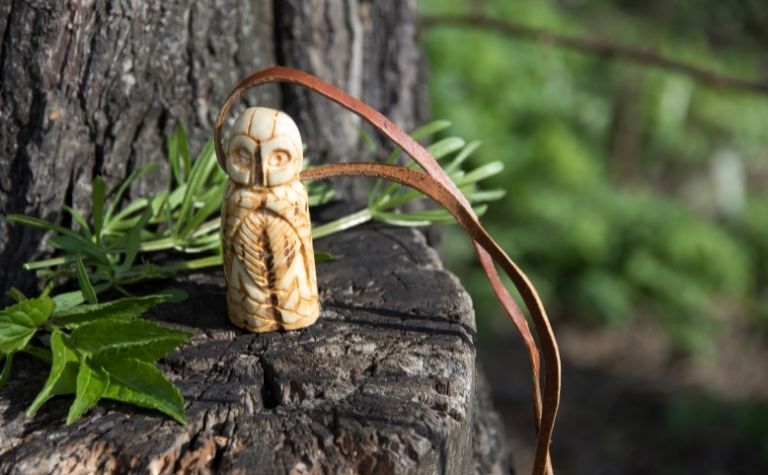
3. Lodurr (Ve): Brother of Odin and Hoenir
Of the trio of the first three Norse gods, Lodurr (also known as Ve) is a figure about whom very little is known.
In fact, despite Lodurr contributing to the brothers’ joint creation of the first human man and woman, Ask and Embla, his name is only mentioned one time in the Poetic Eda. [8]
Based on the poetic verse that mentions Lodurr, each of the three brothers imbued Ask and Embla with different characteristics.
Odin gave them breath and life, Hoenir gave the two understanding and intelligence, and Lodurr gave them their physical senses and appearance.
Also, see The Norse Tree of Life: A Fascinating Viking Symbol to learn more.
4. Frigga: Queen of the Aesir, Goddess of Fertility, more
While not one of the three original Norse gods, Frigga, Queen of the Aesir, is central to the interconnected web of the pantheon of Norse deities.
As wife and lover of Odin, Frigga gives birth to his second son, Baldur, who later goes on to have a son who is another crucial Norse god on this list, Forseti, the god of justice.
Despite her role as Queen, however, there are relatively few mentions of this co-ruler of the Aesir.
For the most part, many of the attributes listed of Frigga, such as her ability to foresee and change “the course of fate,” are shared with the Vanir goddess Freyja. [9]
Additionally, several other indications indicate these two goddesses may have once been regarded as one and the same.
In several Germanic myths that preceded and supplemented the Old Norse texts, the names of Odin, Frigga, Freyja, and Freyja’s husband deviate and overlap.
Whether Frigga and Freyja should be regarded as distinct goddesses is still up for interpretation today.
To learn more about Frigga, Freyja, and other Norse goddesses, see 10 Goddesses in Norse Mythology That You Need to Know).
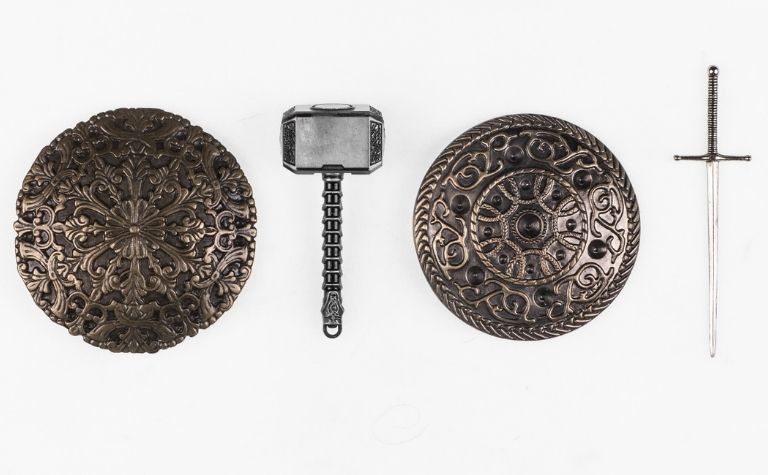
5. Fjorgyn/Jord (Earth): Goddess of Nature
Another important but seldom-mentioned mother figure is Fjorgyn, who is also known as Jord or Earth.
As the goddess of nature, Fjorgyn is seen as the Norse equivalent of Mother Earth and has been thought to influence the region’s agricultural growing season.
As the mother of Thor, Odin’s first and most powerful son, giantess Fjorgyn is a potential adversary to Frigga, although many legends depict Fjorgyn as being married to another deity.
The Most Powerful Sons of Odin: The All-Father has many sons in Norse mythology.
Among them, six are the most important and most powerful and about whom the most information is mentioned and known via the Old Norse texts.
Please also see the article, Why Does Odin Only Have One Eye? to learn more.
6. Thor: the God of Thunder and Lightning
Thor is perhaps the most well-known Norse god, God of thunder and lightning, and is seen as the second most powerful god, following Odin.
Within his superhuman abilities, Thor can control the weather and call upon physical strength that is unmatched by any being in the universe. [10]
Thor is the son of Odin and Fjorgyn, and in Norse imagery, he is frequently shown to have a red beard and red eyes.
His role in Norse mythology is defined as being the defender of Asgard, the stronghold and home of most of the Aesir gods.
Among his signature tools, Thor carries iron gloves, the belt of Megingjard, and his blessed, dwarf-made hammer Mjolnir, which roughly equates to “lightning.”
By pre-Christian Norse people, the sound of thunder was thought to be caused by Thor striking this hammer while fighting giants and monsters. (Also, see The Giants of Norse Mythology to learn more.)
Additionally, Thor is also regarded as the god of agriculture, fertility, and holiness. Interestingly, Thor’s name is something English speakers may unknowingly reference frequently.
The original Old English for Thursday literally means “Thor’s day.” [11]
Interested in Thor? See the article, Who Can Lift Thor’s Hammer? The Secrets of Mjolnir to learn more.
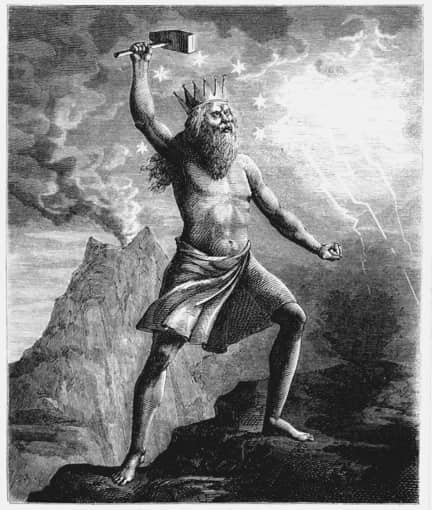
7. Baldur: the God of Light and Purity
Baldur (also spelled Balder, Baldr) is generally associated with the ideas of light, beauty, happiness, and love. He is a half-brother of Thor and the son of Odin and Frigga.
As the embodiment of summer, Baldur is known to be fair in appearance, gracious, wise, and gentle.
As a beloved figure among the Aesir gods, Baldur is the center of a far-reaching tragedy when he is accidentally killed by his blind twin brother, Hod, who was tricked by another god Loki who is addressed later on in this list. [12]
Baldur was thought to be impervious to anything made from living things found in Asgard (the god’s homeworld) or Midgard (the realm where humans live), except for mistletoe.
The background of this trait is that Baldur was bestowed this immunity when his mother, Frigga made a plea to all living things not to harm her son, but in the process, she forgot to include mistletoe.
The dart, which Hod threw a jest, was one that Loki had made of mistletoe, knowing it would be able to harm Baldur.
When Baldur was sent to Hel, the Norse version of the underworld, many other Norse gods attempted to retrieve the beloved Baldur’s soul, but their attempts were ultimately unsuccessful.
8. Tyr: God of War and Heroism
Tyr (or Ty) is said to be responsible for choosing who will win or lose during battle.
Tyr is often described as a one-handed god, who was said to have lost his hand when he attempted to trap Fenrir, the wolf foretold to kill Odin during Ragnarok.
During this battle, Tyr was said to have been able to successfully bind the wolf until Ragnarok. He is often compared and equated to Mars and the Roman god of war.
The Tree of Life was an important symbol in Norse mythology. See The Norse Tree of Life: A Fascinating Viking Symbol to learn more.
9. Vidar: God of Vengeance
Vidar, son of Odin and giantess Grid, is known to be the next in physical strength following Thor.
In Old Norse, his name is thought to mean the “wide-ruling one,” which is interesting considering that most of his references are solely about his role in Ragnarok. [13]
Vidar is prophesied to avenge Odin’s death during Ragnarok by killing Fenrir, the wolf who kills Odin.
After Ragnarok finally occurs, Vidar is one of the few major Norse gods to be left standing in the aftermath.
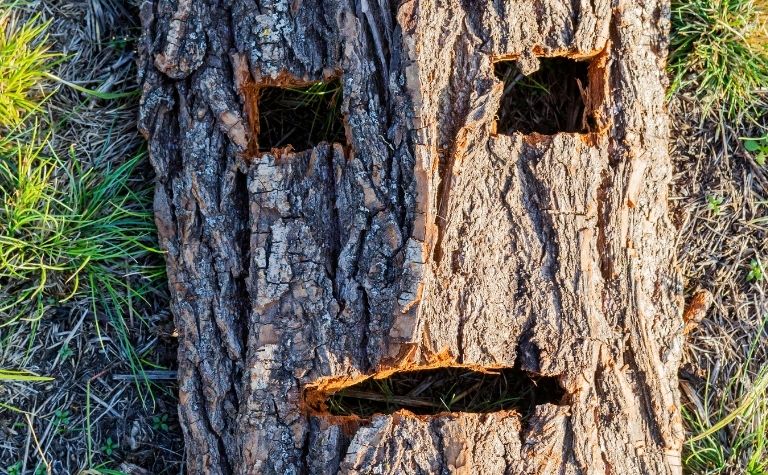
10. Hod: the God of Winter and Warriors
Full brother of Baldur, Hod is also the son of Odin and Frigga. He is most well-known for the unwitting part he plaid in Loki’s plan to shoot and kill Baldur with a dart made of mistletoe. [14]
What makes the trick played on Hod and Baldur even more tragic is that the dart-throwing at Baldur was somewhat of an amusing pastime among the Norse gods, who would frequently test different weapons of Baldur to see their effect on him. (Also see Norse Mythology vs Christianity: What’s the Difference?)
When Loki discovered that Frigga had failed to ask Mistletoe not to harm her son, he made a weapon out of the plant and tricked Hod into shooting it at Baldur, killing him in the process.
In the aftermath of this tragedy, Odin decided to have another son, Vale, with the giantess Rind.
11. Vali: the God of Revenge
Vali (or Vale), is the son of Odin and the giantess Rind. His existence is unique because, unlike Vidar, who was eventually prophesied to avenge Odin, Vali was supposedly specifically conceived and born to fulfill Odin’s plan to avenge Baldur’s death.
According to Norse myths, one day old, Vali killed his half-brother Hod as revenge for his part in Baldur’s death.
12. Bragi – the God of Poetry
The god of poetry is thought to be based on a real person named Bragi Boddason. Boddason is thought to have served in the courts of Ragnar Lodbrok and Bjorn at Hague in the 9th century.
The god of poetry is described as incredibly eloquent.
His main role is to act as the entertainer in Valhalla, the hall where fallen heroes and warriors are said to gather and await the great, final battle of Ragnarok.
Other Gods of Dominion: Outside of Odin and his many sons, other gods still rule over various elements of Asgard and Midgard.
Among the most important of them are Hel, Skadi, Aegir, and Forseti.
13. Hel: the Goddess of the Dead
The Norse counterpart to the Greek god Hades, the goddess Hel is the ruler of an underworld with the same name in Norse mythology.
Many of the monstrous creatures responsible for the deaths of Norse gods, such as Fenrir the World and Jormungandr the Serpent, live in the underworld alongside the universe’s dead. [15]
Like Fenrir and Jormundandr, Hel is an offspring of Loki, and her moth is giantess Angrboda. Hel is responsible for judging and deciding the fate of all the souls who come to the underworld.
Depending on which legends are referenced, Hel has been described as having a half-decomposed face, a human woman’s torso, and a corpse’s legs. [16]
Although Odin and Thor would overall be described as more powerful gods than Hel, within the scope of the underworld, no one could overpower her or undo her decisions, which is why the attempts to retrieve Baldur from Hel failed.
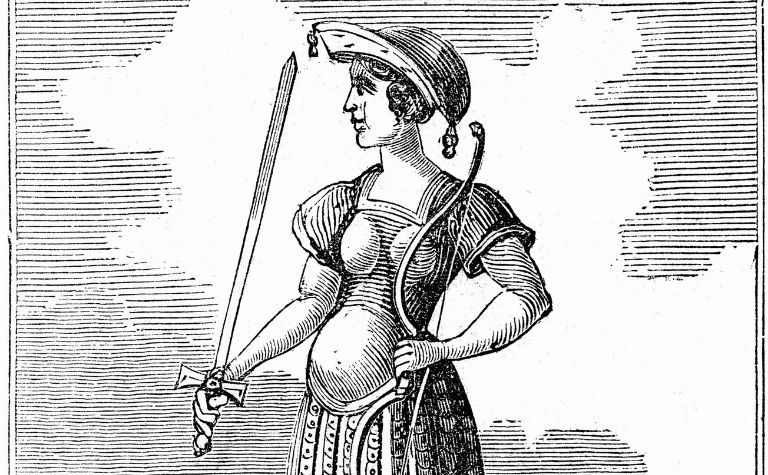
14. Skaldi: the goddess of the wilderness
Born from the Norse giants, Skadi is known for hunting in the wilderness of the mountains.
After marrying Njord, the god of the sea from the Vanir tribe, Skadi is welcomed into Asgard and seen as a goddess.
In some stores, she is described as leaving Njord and later marrying and having several children with Odin. [17]
Skadi is associated with many skills valuable to pre-Christian Germania and Scandinavia warriors, including skiing, archery, and hunting.
As a giantess, she is heavily associated with winter and darkness.
However, likely because she became a goddess through marriage, Skadi has historically been highly venerated by Norse populace, who potentially saw her as more accessible or merciful than other deities. [18]
15. Aegir: the God of the Sea
Also known as Gymir, Aegir is known as the Aesir god of the sea, and he plays a central role in several Norse mythical stories simply because he frequently hosted feasts for the other gods to attend. [19]
An interesting fact is that gold is known as Aegir’s Fire in Norse mythology.
This refers to a story where Aegir presented the other gods with gold so bright that when the gold was later used to make warriors’ swords, those swords were used to light both Aesir’s banquets and the halls of Valhalla.
Also, see The Yggdrasil: The Sacred Tree of Norse Mythology to learn more.
16. Forseti: the God of Justice
Forseti, the god of justice, is the son of Baldur and Nanna, the goddess of wisdom and the moon.
Among his responsibilities, Forseti is charged with hearing and judging all legal disputes in Glitnir, his legendary palace made of red gold.
Other Important Aesir Gods: Some of the Aesir gods central to the Norse stories were neither clearly indicated to be part of Odin’s family tree nor tasked with central roles and responsibilities in Asgard or Midgard.
However, that doesn’t mean that such gods, including Loki, Elli, Gefion, and Heimdall, didn’t play important parts in Norse mythology.
17. Loki: the Trickster God
Loki is a god known for causing chaos through mischievous behavior and outright tricks of other deities.
He is a jotunn, or giant, the son of giant and giantess Farbauti and Laufey, and has the power to shape-shift, which he uses in several of his tricks on other gods. [20]
Although he causes anger, harm, anguish, and even death to other beings in Norse mythology, Loki is not described as outright evil but certainly as cruel.
Loki is foretold to cause or contribute to several deaths of Norse gods during Ragnarok, and he is the father of the wolf Fenrir, who kills Odin, and the snake Jormungandr, who will poison and kill Thor. [21]
Loki is often portrayed as the antithesis of the other main god of the Aesir in the stories he is involved in. However, in many stories, you can find Loki teaming up with Aesir, the gods he formerly quarreled with.
Do people still believe in Odin, Thor, and Freyja? See Is the Norse Religion Still Practiced? to learn more.
18. Elli: the Goddess of the Old Age
The goddess Elli personifies the concept of old age and is meant to represent the wisdom and strength of the elderly.
Serving as an emblem of the respect of elders in Norse values, the most well-known story about Elli occurs in the Prose Eda, where Elli faces Thor in a wrestling match and emerges as the victor. [22]
19. Gefion: the Goddess of Vegetation and Fertility
The name Gefion, the goddess who influences and oversees agriculture, originates from “gefa,” an Old Norse verb that means “to give.”
Gefion was particularly associated with plowing, and myths about her turning her four sons into oxen described her as digging bodies of water and creating islands that make up major landmarks in Sweden and the Netherlands. [23]
20. Heimdall: the Watchman of the Gods
Heimdall is known as the guardian of Bifrost, the bridge between Asgard (home of the gods) and Midgard (home of humankind). He descends from the giant Fornjot and is the grandson of Aegir, Aesir god of the sea. [24]
Heimdall is usually depicted holding his horn, Gjallarhorn, which is used to warn of the approach of intruders to Asgard.
To allow him to successfully protect the bridge, Heimdall has several powers, including superior eyesight (can see for hundreds of miles), hearing (can hear the sound of wool growing on sheep), energy (sleeps less than a bird), and foresight.
The Vanir Tribe
Although the majority of major figures among Norse gods and goddesses belong to the Aesir tribe, there are still a handful of important figures that come from the Vanir tribe, including Freyja, Freyr, Njord, Nerthus, and Kvasir.
21. Freyja: the Goddess of Beauty and Love
Born to Njord alongside her twin brother Freyr, Freyja is one of the most well-known goddesses within Norse mythology.
She and her brother were both welcomed into Asgard as honorary members of the Aesir after peace was established between the Aesir and Vanir tribes.
Within the Norse pantheon of gods, Freyja is distinguished by her appreciation of love, beauty, and material wealth, and she is known to be a pleasure and thrill seeker.
Beyond those behaviors, Freyja also controls powerful magical abilities and is thought to be responsible for the seidr, the “most organized form of Norse magic.” [25]
Also, see the full article Freya: Norse Goddess of Love and War
22. Freyr: the God of Peace and Fertility
Freyr, also called Froy in some texts, is a god associated with virility and prosperity.
In Norse mythology, Freyr, in many ways represents concepts that are the antithesis of the dark nature of Norse giants. Freyr brings sunshine, favorable weather, and fertility, in terms of human reproduction and agriculture.
In light of this, it’s unsurprising that Freyr is one of history’s most often worshipped Norse gods.
Freyr was often honored during Norse marriage ceremonies and harvest celebrations.
He is normally depicted as a strongly built man with long hair.
The wealth, peace, and prosperity, that Freyr represents takes on animal form in his companion, a boar named Gullinborsti, which means “golden-bristled.” [26]
The god is also linked with the Norse elves, as he was thought to live in Alfheim, the elves’ homeland.
Some scholars even regard him as a kind of elf, but this is not concretely laid out in available texts.
23. Njord: the God of the Sea and Winds
Njord, known as the god of the sea and sailors, was frequently praised and worshipped by seafarers, who made up a significant portion of Norse society, especially in ancient times. (Also see Do People Still Believe In Odin?)
Also, Njord is known as a god of the Vanir tribe in later stories.
He becomes an honorary member of the Aesir tribe following the Aesir-Vanir war, like the other figures in the Vanir tribe on this list.
He is regularly associated with wealth and fertility, is married to giantess Skadi, and is the father of twins Freyja and Freyr.
24. Nerthis: the Goddess of Fertility
Nerthus is a relatively unknown goddess, but she is frequently associated with the concepts of fertility, peace, and prosperity.
While Nerthus is said to be linked with Njord in some stories, some scholars debate whether these two figures were simply the male/female counterparts of the same being.
In Norse cultures, Nerthus was often honored through a ritualistic parade of carts covered in ceremonial, holy cloths and pushed by her priests through the villages. (Also see Why Does Odin Have So Many Names?)
25. Kvasir: the God of Widsom
Known as the wisest of all men, Kvasir technically exists in an in-between space between the Aesir and Vanir tribes, according to certain legends.
At the end of the war of the gods, the two tribes participated in an “ancient peace ritual of spitting into a common vessel.” [27]
During that ritual, Kvasir emerged as the essence of both groups, symbolizing the peace between them.
Conclusion
Within and beyond the legends contained in the Prose Edda and Poetic Edda, the stories about these figures weave a fascinating tapestry of history and culture.
While this list of 25 Norse Gods is a great start, there’s plenty more information about the exploits, conflicts, and adventures of these and other Norse gods.
Also, see 15 Facts About Viking Women.
References:
[1] Source
[2] Source
[3] Source
[4] Source
[5] Source
[6] Source
[7] Source
[8] Source
[9] Source
[10] Source
[11] Source
[12] Source
[13] Source
[14] Source
[15] Source
[16] Source
[17] Source
[18] Source
[19] Source
[20] Source
